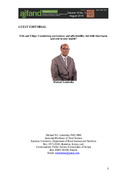| dc.description.abstract | Although milk is the main meal and major contributor to nutritional requirements of the Turkana nomads, livestock-meat increasingly becomes central to the diet whenever the milk supply declines, and as the dry season progresses. Major social obligations are performed and networks made, maintained, and extended using livestock-meat, whose apportionment is based on seniority and power, which are equated to age and the order of marriage for females at the homestead feast. Age, the position in the hierarchy of the generation-set, and wealth, are the considerations for meat distribution at the males-only meat feast. Being the rare, desirable and major food item donated, exchanged, or offered in social transactions and as the main food in the dry season elevates its status. The analysis suggests that livestock-meat, a high status food, reveals gender, rank, respect, and perceived status of the Turkana pastoralist on social occasions. | en_US |
